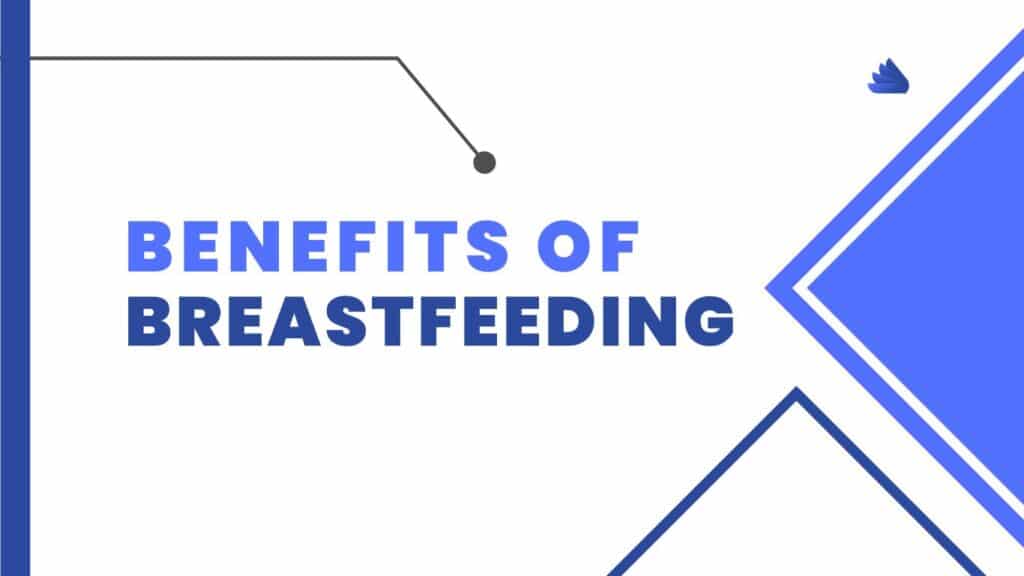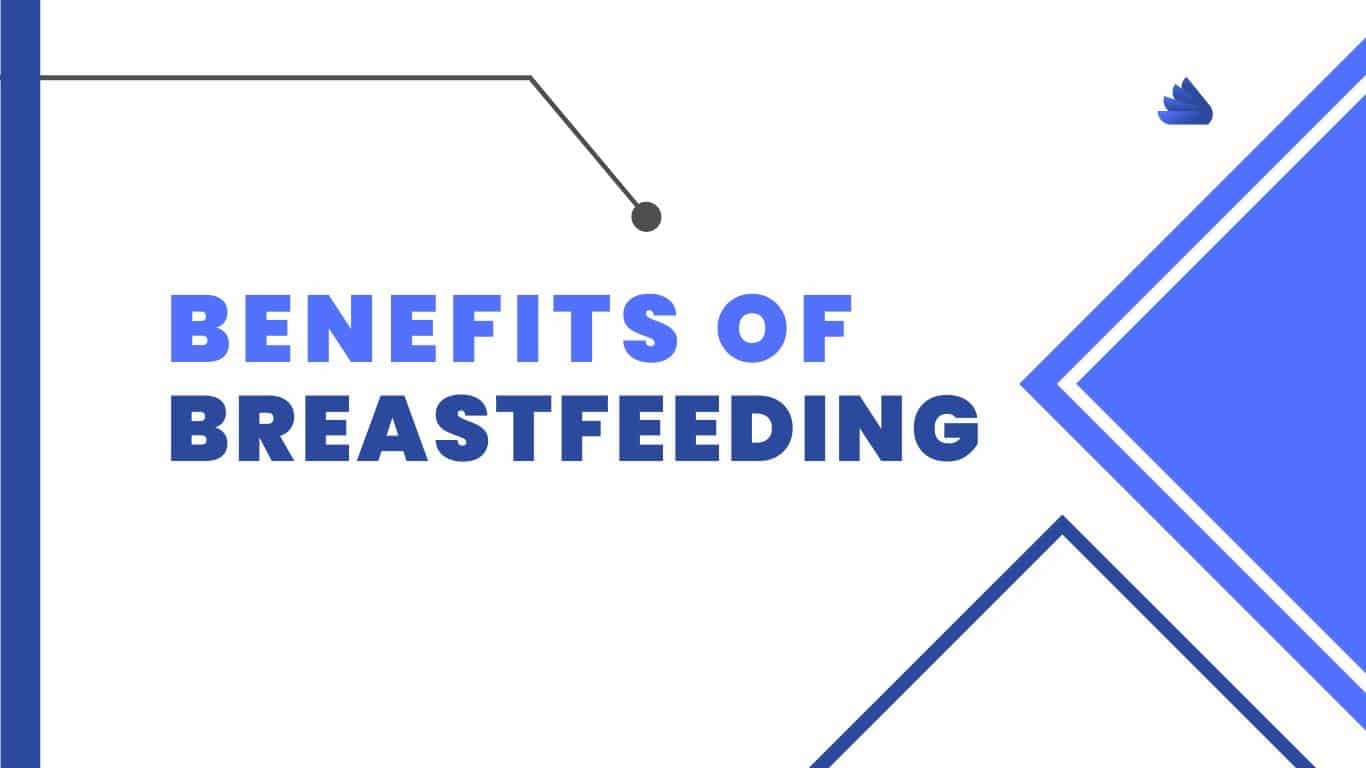“From Nutrition to Emotional Support: The Many Benefits of Breastfeeding for Mother and Child”

Breastfeeding is the recommended method of feeding infants, as it provides numerous health benefits for both the mother and the baby. Breast milk is the perfect food for a newborn, as it is easily digestible, contains all the necessary nutrients, and provides immunity against infections and diseases. In addition, breastfeeding has been linked to a reduced risk of certain chronic conditions in both the mother and the baby, such as obesity, type 2 diabetes, and certain types of cancer.
Here are some important steps for proper breastfeeding:
Get off to a good start: It is important to start breastfeeding as soon as possible after delivery, as this helps to establish a good milk supply and promotes bonding between the mother and the baby. The baby should be placed skin-to-skin on the mother’s chest and allowed to latch on and feed as soon as they are ready.

Position and latch: It is important to find a comfortable and effective breastfeeding position. Some common positions include the cross-cradle hold, the football hold, and the side-lying position. The baby should be latched onto the breast properly, with the mouth wide open and the lips flanged outward. The baby should take as much of the areola (the dark area around the nipple) into their mouth as possible.
Feed frequently: It is important to feed the baby on demand, rather than on a schedule. Newborns should be fed every 2-3 hours, while older babies may feed every 3-4 hours. The baby should be allowed to feed as long as they want on one breast and then offered the other breast.
Watch for signs of hunger: It is important to recognize the baby’s hunger cues, such as rooting, sucking on their hands, or making sucking noises. Responding to these cues promptly will help to establish a good milk supply and ensure that the baby is getting enough milk.
Pay attention to the baby’s latch and sucking: It is important to pay attention to the baby’s latch and sucking to ensure that they are getting enough milk. The baby should be swallowing regularly, and their mouth should be full of breast tissue. If the latch is not effective, the mother may experience pain or discomfort, or the baby may be fussy or not gain weight. In these cases, it may be helpful to seek the assistance of a lactation consultant or a healthcare provider.
Monitor the baby’s weight gain: It is important to monitor the baby’s weight gain to ensure that they are getting enough milk. Newborns should gain weight at a rate of about 0.5-1 ounce per day. If the baby is not gaining weight or is losing weight, it may be necessary to supplement with formula or seek the advice of a healthcare provider.
Pay attention to the mother’s diet: The breastfeeding mother needs to pay attention to her diet, as her nutritional needs are increased during this time. The mother should aim to consume a balanced diet that includes plenty of fluids, protein, and calories. It is also important to avoid alcohol and certain medications, as these can pass into the breast milk and potentially harm the baby.
Take care of the breasts: It is important to take care of the breasts during breastfeeding to prevent problems such as sore nipples or plugged ducts. The mother should wear a supportive bra, avoid tight clothing that may put pressure on the breasts, and regularly clean the breasts with water and mild soap. If the mother experiences sore nipples, she can try using lanolin ointment or expressing a small amount of breast milk and allowing it to air dry on the nipples.
How do I gain weight while breastfeeding?
Breastfeeding mothers need to pay attention to their diet, as their nutritional needs are increased during this time. To gain weight while breastfeeding, there are several strategies that you can try:

Eat a balanced diet: It is important to consume a diet that includes a variety of nutrients, including protein, carbohydrates, healthy fats, and vitamins and minerals. Some good sources of these nutrients include lean meats, dairy products, whole grains, fruits and vegetables, and healthy fats such as olive oil, nuts, and avocados.
Eat frequent, small meals: To meet your increased caloric needs, it may be helpful to eat frequent, small meals throughout the day rather than trying to consume large amounts of food at once. This can help to boost your energy levels and prevent you from feeling too full.
Drink plenty of fluids: It is important to stay hydrated while breastfeeding, as this can help to support milk production and maintain energy levels. Aim to drink at least 8-12 cups of fluids per day, including water, milk, and other beverages.
Include snacks: Snacking can be a helpful way to increase your caloric intake without feeling too full. Some good snack options include nuts, fruit, yogurt, and cheese.
Consult with a healthcare provider or a registered dietitian: If you are having difficulty gaining weight while breastfeeding, it may be helpful to consult with a healthcare provider or a registered dietitian. They can assess your nutritional needs and guide how to meet them.
What position is best for breastfeeding?

Several positions are suitable for breastfeeding, and the best position for you will depend on your comfort and the comfort of your baby. Some common breastfeeding positions include:
Cross-cradle hold:
In this position, the mother holds the baby in the crook of one arm, with their head in the palm of the mother’s hand. The mother supports the breast with the opposite hand, with the thumb on top and the fingers underneath.
Football hold:
In this position, the mother holds the baby under one arm, with the baby’s head resting in the crook of the elbow. The mother supports the breast with the opposite hand. This position is often helpful for mothers with larger breasts or infants with reflux.
Side-lying position:
In this position, the mother and baby lie on their sides facing each other. The mother supports the breast with one hand, while the baby latches on to the breast. This position is often helpful for nighttime feedings or for mothers who have had a cesarean delivery.
Laid-back breastfeeding:
In this position, the mother reclines in a comfortable chair or bed, with the baby lying on their chest. The mother supports the breast with one hand and helps the baby latch on to the breast. This position is often helpful for mothers who have had a cesarean delivery or who are experiencing engorgement.
Overall, the key is to find a position that is comfortable for both the mother and the baby. It may be helpful to try different positions to see what works best for you. It is also important to ensure that the baby is properly latched onto the breast, with their mouth wide open and its lips flanged outward. If you are having difficulty finding a comfortable breastfeeding position or are experiencing discomfort, it may be helpful to seek the guidance of a lactation consultant or a healthcare provider.
How to stop breastfeeding a 2-year-old-child: Home remedies
Deciding when to stop breastfeeding is a personal decision that should be based on the needs and desires of both the mother and the child. If you are considering stopping breastfeeding your 2-year-old, there are several strategies that you can try:

Gradually reduce the frequency of feedings:
One way to wean your child from breastfeeding is to gradually reduce the number of feedings that you offer. This can be done by replacing one breastfeeding session with a bottle of formula or cow’s milk, or by offering a snack or a drink instead of breastfeeding. It may be helpful to start with the least preferred feeding times and work your way up to the most preferred times.
Use a feeding schedule:
Another option is to use a feeding schedule to help your child understand when they will be able to breastfeed. For example, you could offer breastfeeding sessions at specific times of day, such as first thing in the morning and before bedtime, and gradually reduce the number of sessions as your child becomes accustomed to the schedule.
Distract your child:
When your child expresses a desire to breastfeed, you can try distracting them with a favorite toy or activity. This can help to shift their focus and reduce their desire to breastfeed.
Use a comfort object:
Giving your child a comfort object, such as a stuffed animal or a blanket, can provide a sense of security and help to reduce their need for breastfeeding.
Seek support:
If you are finding it difficult to stop breastfeeding, it can be helpful to seek the support of a lactation consultant or a healthcare provider. They can provide guidance and support to help you and your child through the weaning process.
Overall, the key to stopping breastfeeding is to do so gradually and in a way that is comfortable for both you and your child. By using a combination of these strategies, you can help your child to transition smoothly to other forms of feeding.
Is Becosules safe for breastfeeding mothers?
Becosules is a dietary supplement that contains a combination of vitamins and minerals. It is not specifically indicated for use by breastfeeding mothers, and the safety of Becosules for breastfeeding mothers has not been well-studied.
In general, breastfeeding mothers need to be cautious about taking any medications or supplements, as some substances can pass into the breast milk and potentially harm the baby. It is always a good idea to consult with a healthcare provider before taking any medications or supplements while breastfeeding.
If you are considering taking Becosules while breastfeeding, it is important to discuss this with your healthcare provider. They can assess your nutritional needs and guide whether Becosules is appropriate for you. They can also help you to determine the appropriate dosage and frequency of use.
Overall, breastfeeding mothers need to be cautious about taking any medications or supplements and to consult with a healthcare provider before starting any new treatment.
Can I eat tandoori chicken while breastfeeding?
Tandoori chicken is a type of Indian dish that is typically made by marinating chicken in a mixture of yogurt, spices, and other ingredients, and then cooking it in a tandoor oven. There is no evidence to suggest that consuming tandoori chicken while breastfeeding is harmful to the baby. However, as with any food, it is important to be mindful of your diet while breastfeeding and to avoid consuming large amounts of unhealthy or heavily processed foods.
In general, it is recommended for breastfeeding mothers to consume a balanced diet that includes a variety of nutrients, including protein, carbohydrates, healthy fats, and vitamins and minerals. This can help to support milk production and maintain energy levels. It is also important to drink plenty of fluids and avoid alcohol and certain medications, as these can pass into the breast milk and potentially harm the baby.
If you are concerned about the safety of a particular food while breastfeeding, it is always a good idea to consult with a healthcare provider or a registered dietitian. They can assess your nutritional needs and guide how to meet them.
How do I prepare my inverted nipples for breastfeeding?
Inverted nipples, or nipples that turn inward rather than outward, can sometimes make it more challenging to breastfeed. However, with proper technique and support, it is usually possible to breastfeed successfully with inverted nipples.
Here are some strategies that you can try to prepare your inverted nipples for breastfeeding:
Use breast shells or shields:
Breast shells or shields are small, dome-shaped cups that can be worn inside your bra to help draw out the nipple and make it more accessible for the baby to latch onto. These can be helpful for mothers with inverted or flat nipples.
Use a nipple shield:
A nipple shield is a thin, flexible silicone shield that can be placed over the nipple during breastfeeding to help the baby latch on more effectively. Nipple shields can be helpful for mothers with inverted nipples, but they should be used with caution, as they can interfere with the baby’s ability to get enough milk if not used properly.
Try hand expression:
Hand expression is a technique in which you use your hands to gently compress and squeeze the breast to express milk. This can help to draw out the nipple and make it more accessible for the baby to latch onto.
Use a breast pump:
A breast pump can be used to stimulate the breast and help draw out the nipple. This can be helpful for mothers with inverted nipples, as it can help to establish a good milk supply and make it easier for the baby to latch on.
Seek support:
If you are having difficulty breastfeeding with inverted nipples, it can be helpful to seek the guidance of a lactation consultant or a healthcare provider. They can guide proper breastfeeding techniques and suggest strategies to help you and your baby succeed.
Overall, with proper technique and support, it is usually possible to breastfeed successfully with inverted nipples. By trying these strategies and seeking guidance as needed, you can help to ensure that your baby gets the best possible start in life.
How To Solve Pain in Breast After Breastfeeding
Breast pain, also known as mastodynia, is a common concern among breastfeeding mothers. It can be caused by a variety of factors, such as engorgement, an improper latch, or a blocked milk duct. Here are some strategies that you can try to alleviate breast pain after breastfeeding:
Use a warm compress:
Applying a warm compress to the affected breast can help to reduce swelling and discomfort. You can use a warm washcloth or a heating pad set on a low setting.
Use over-the-counter pain medication:
Over-the-counter pain medications, such as acetaminophen (Tylenol) or ibuprofen (Advil), can help to reduce breast pain and inflammation. It is important to follow the dosage instructions on the package and to avoid taking more than the recommended amount.
Massage the affected area:
Gently massaging the affected area can help to improve milk flow and alleviate discomfort. You can use your hands or a warm compress to massage the breast in a circular motion.
Apply cold compresses:
Applying a cold compress to the affected breast can help to reduce swelling and discomfort. You can use a cold washcloth or a bag of frozen peas wrapped in a towel.
Practice good breastfeeding techniques:
Ensuring that your baby is latched on properly and breastfeeding frequently can help to reduce breast pain and discomfort. If you are having difficulty breastfeeding or are experiencing discomfort, it can be helpful to seek the guidance of a lactation consultant or a healthcare provider.
Why breastfeeding in public is taboo?
Breastfeeding in public is a personal decision that is up to the individual mother to make. In some cultures and societies, breastfeeding in public may be considered taboo or inappropriate, while in others it is more accepted and common.
There are a variety of reasons why breastfeeding in public may be considered taboo in some cultures. These may include:
The stigma surrounding the exposure of breasts:
In some cultures, breasts are traditionally considered to be private or sexualized, and the exposure of breasts in public may be viewed as inappropriate or offensive.
Lack of education and awareness:
Some people may not be aware of the benefits of breastfeeding or may not understand the importance of breastfeeding for the health and well-being of both the mother and the baby. This can contribute to a lack of support or acceptance for breastfeeding in public.
Limited options for private breastfeeding:
In some situations, mothers may not have access to private or designated breastfeeding areas, which can make breastfeeding in public feel more taboo.
Personal comfort level:
Some mothers may feel uncomfortable breastfeeding in public due to their comfort level or concerns about attracting unwanted attention.
You May Also Like
- Premenstrual Syndrome (PMS) Explained: Powerful Relief Strategies for 2026
- Magnetic Seizure Therapy (MST): A Breakthrough in Psychiatric Treatment in 2025
- AIIMS New Delhi, NIMHANS Bengaluru, JIPMER Puducherry: No Leaves for Healthcare Workers Amid Tensions
- Narcissistic Personality Disorder in 2025: Unveiling the Hidden Struggles and Empowering Recovery
- Conquering Rubral Tremor: Unveiling Effective Treatments in 2025
Karnataka Brain Health Initiatives
